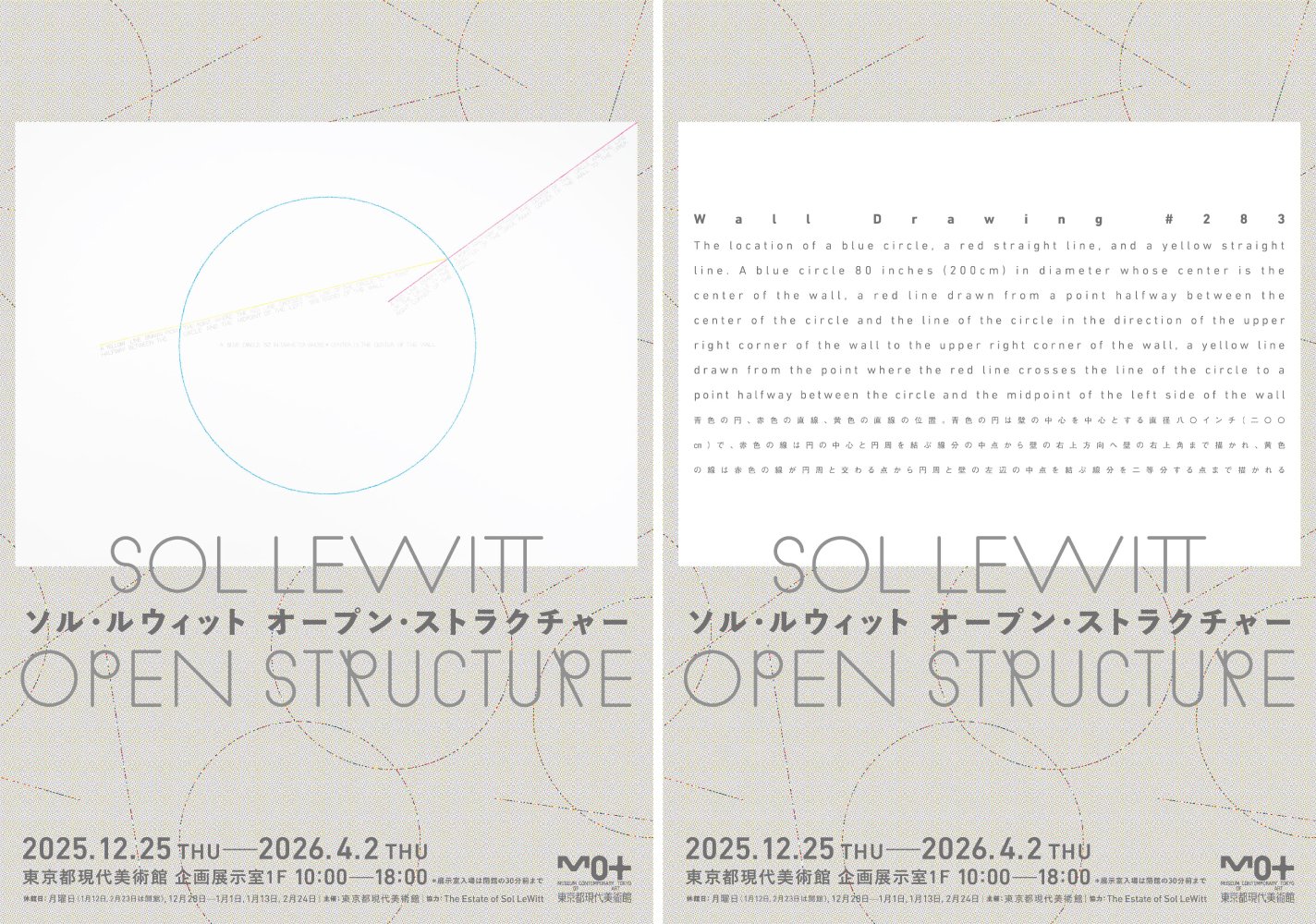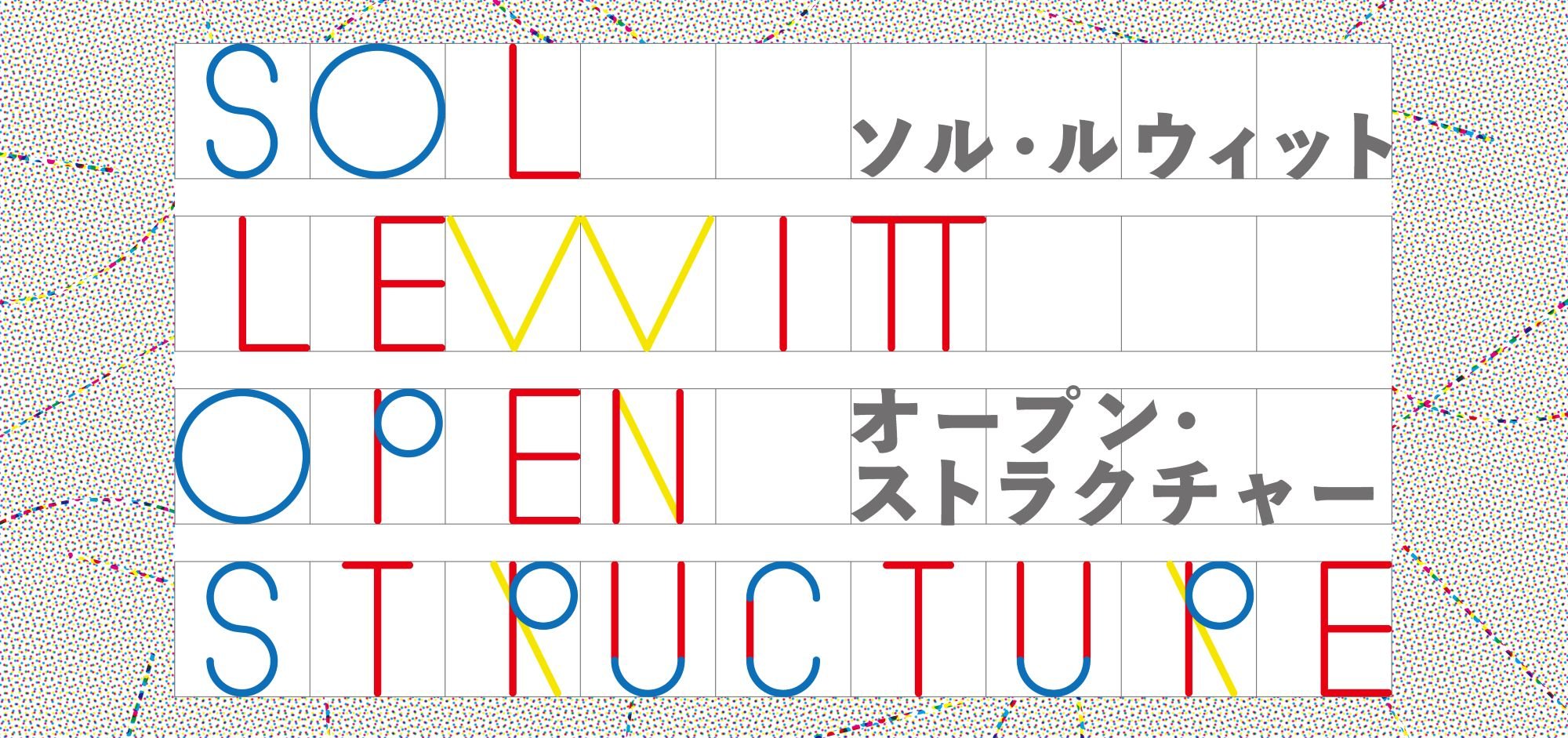
Sol LeWitt: Open Structure
Sol LeWitt (1928–2007), one of the most influential American artists of the latter half of the twentieth century, is renowned for exploring the possibilities of what art can be through works focused on ideas. This exhibition, the first substantial survey of his art at a public museum in Japan, offers an overview of his expansive practice, encompassing wall drawings, structures, works on paper, and artist's books that radically transformed the terms of artistic production.
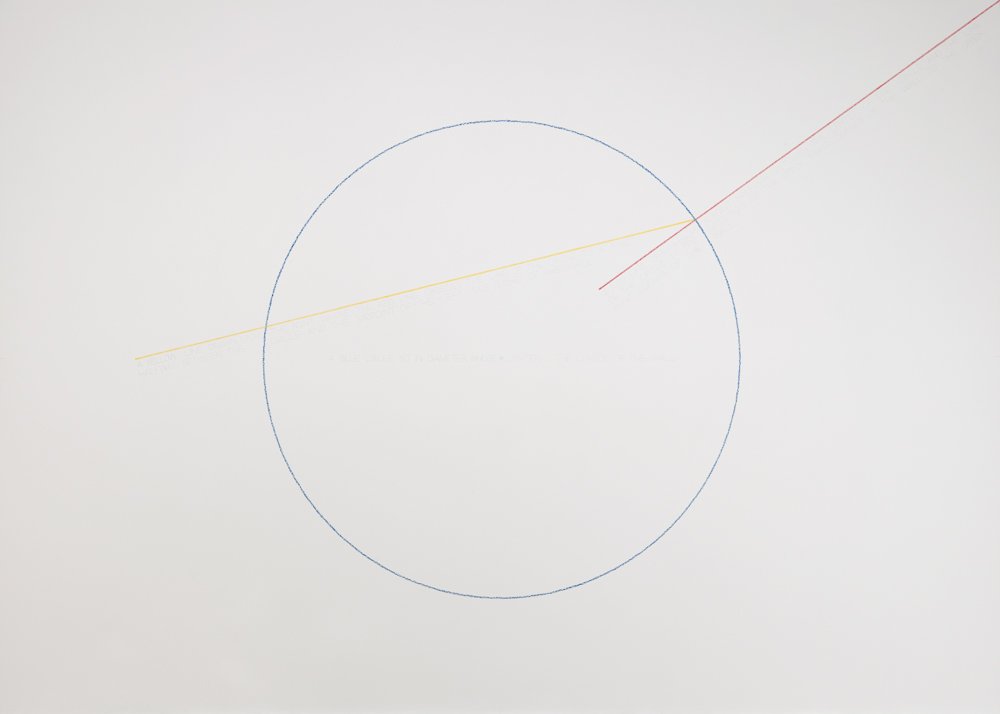
Sol LeWitt, Wall Drawing #283 The location of a blue circle, a red straight line and a yellow straight line, first installation: 1976. Installation view at Yale University Art Gallery West Campus Collections Center, West Haven, Connecticut, 2017. © 2025 The LeWitt Estate / Artists Rights Society (ARS), New York. Courtesy Paula Cooper Gallery.
In the 1960s, LeWitt challenged the conventional notion that art expresses the artist’s inner self or emotions. By combining cubes as basic units into modular structures, he demonstrated how serial progression could determine the form of a work, as in Structure (One, Two, Three, Four, Five as a Square) (1978-80). For him, the origin and core of artistic creation lay in its underlying idea, structure, plan, or process, not in the object itself. He articulated this principle in his seminal essay "Paragraphs on Conceptual Art" (1967): "When an artist uses a conceptual form of art, it means that all of the planning and decisions are made beforehand and the execution is a perfunctory affair. The idea becomes a machine that makes the art." One of LeWitt's lifelong projects, wall drawings began with the first installation at Paula Cooper Gallery in 1968 and ultimately comprised over 1,300 pieces. Most were executed not by the artist himself but by others following his instructions or diagrams, and were often painted over after exhibitions. This approach and process serve to question the premises of authorship, permanence, and uniqueness in art. Beginning in the 1980s, his work featured more complex forms and superimposed vibrant, opulent hues. These developments, however, remain consistent with his prior practice based on simple systems and instructions and represent an expansion of the scope of his artistic thought. In this exhibition, six wall drawings will be presented, offering visitors the opportunity to experience the unfolding of LeWitt’s conceptual approach.
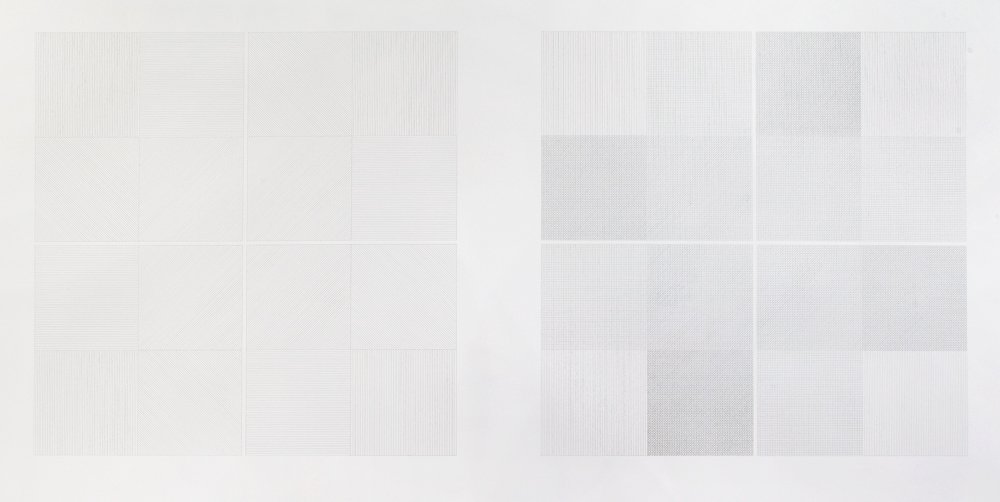
Sol LeWitt, Wall Drawing #1164 Drawing Series I 2 (A & B), conception: 1969, first installation: 2005. Installation view at Gladstone, Brussels, 2010. © 2025 The LeWitt Estate / Artists Rights Society (ARS), New York. Courtesy Paula Cooper Gallery.
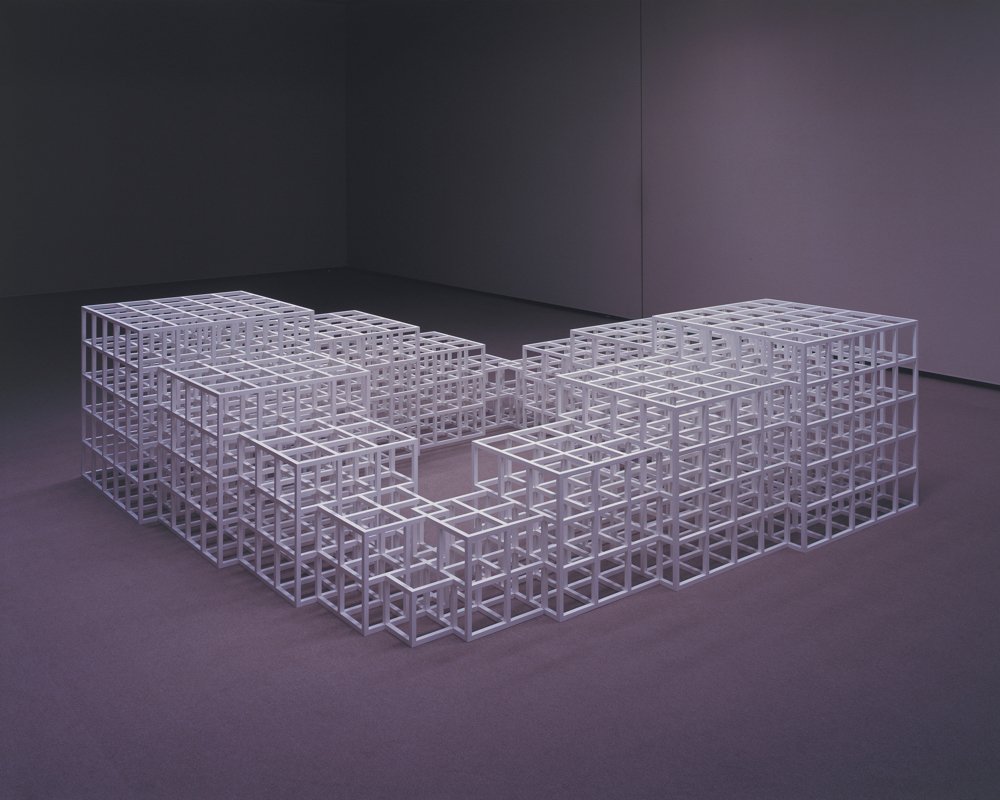
Sol Lewitt, Structure (One, Two, Three, Four, Five as a Square), 1978-80. Collection of Shiga Museum of Art. © 2025 The LeWitt Estate / Artists Rights Society (ARS), New York. Courtesy Paula Cooper Gallery.
This exhibition illuminates the notion of "open structure," which characterizes LeWitt’s art. Many of his cubic works expose the framework that supports their forms by eliminating surfaces and emphasizing side lines. Works such as Incomplete Open Cube (1974), where certain edges are absent, evoke the dynamics of a structure in a state of sequential transformation, much like a single frame in chronophotography, thus dismantling notions of perfection and invariability. It is also notable that his wall drawings can take on different forms depending on the space and conditions in which they are installed, as well as those who execute them. No matter how precisely the artist’s instructions are followed in translating ideas into form, a degree of unpredictability and interpretation by others inevitably intervenes, an aspect the works embrace. His statement, "Ideas cannot be owned. They belong to whoever understands them," reflects his belief in resisting the notion that ideas are the property of a single person and in committing to sharing them with all who might receive them. To make his ideas more accessible, LeWitt produced numerous artist’s books. This led him to co-found Printed Matter in 1976, with art critic Lucy R. Lippard and others, an organization dedicated to distributing artists’ books independent of the established art market.
From the 1960s onward, as art came to be regarded not merely as an object to be viewed but as a space for thought, LeWitt played a decisive role and has remained a lodestar, particularly in the field of idea-driven and instruction-based art. By reconfiguring existing systems and structures and opening a creative interstice within them, his work suggests possibilities for alternative perspectives and frameworks, offering opportunities to reflect on how we perceive and engage with the world.
Sol LeWitt | Profile
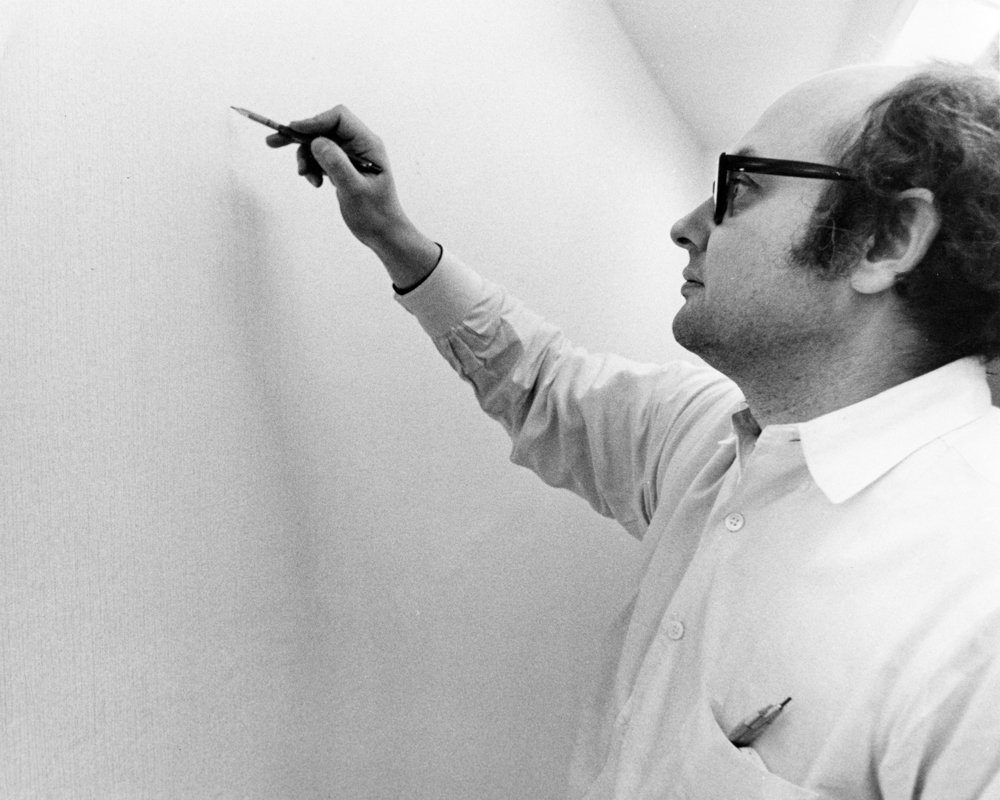
Sol LeWitt working on Wall Drawing #66, at the Guggenheim Museum, New York, 1971. © 2025 The LeWitt Estate / Artists Rights Society (ARS), New York. Courtesy Paula Cooper Gallery.
Sol LeWitt
1928 Born in Hartford, Connecticut, USA
1945 Entered Syracuse University to study painting and printmaking (BFA, 1949)
1951 Drafted into the U.S. Army; served during the Korean War in California, Japan, and Korea
1953 After discharge, moved to New York
1954–55 Worked in photostat production for a magazine, then in graphic design in the office of architect I. M. Pei
1960 Worked at the Museum of Modern Art, New York, at the book counter and night reception desk
1965 Held first solo exhibition at John Daniels Gallery, New York
1966 Participated in Primary Structures, Jewish Museum, New York
1967 Published the essay “Paragraphs on Conceptual Art” in Artforum (Summer issue)
1968 Participated in Art of the Real, Museum of Modern Art, New York
1968 Presented first wall drawing in Benefit for the Student Mobilization Committee to End the War in Vietnam, Paula Cooper Gallery, New York
1969 Participated in Live In Your Head: When Attitudes Become Form, Kunsthalle Bern
1970 Traveled to Japan to participate in 10th Tokyo Biennale, Tokyo Metropolitan Art Museum
1970 Participated in Information, Museum of Modern Art, New York
1976 Co-founded Printed Matter, New York, with Lucy R. Lippard and others
1978 Held first retrospective at Museum of Modern Art, New York
1980 Moved to Spoleto, Italy
1984 Held solo exhibition at Stedelijk Museum, Amsterdam
1986 Moved to Chester, Connecticut
1994 Held solo exhibition at the Haags Gemeentemuseum; Museum of Modern Art, Oxford; and Centre Pompidou, Paris, among others
1995 Participated in Revolution: Art of the Sixties, Museum of Contemporary Art Tokyo
2000 Held retrospective at the San Francisco Museum of Modern Art; Museum of Contemporary Art, Chicago; and Whitney Museum of American Art, New York
2007 Died in New York at the age of 78
Information
- Exhibition Period
December 25, 2025–April 2, 2026
- Opening Hours
10 AM – 6 PM (Tickets available until 30 minutes before closing)
- Closed
Mondays (except Jan 12, Feb 23), Dec 28–Jan 1, Jan 13, Feb 24
- Venue
Museum of Contemporary Art Tokyo, Exhibition Gallery 1F
- Admission
Adults – 1,600yen / University & College Students, Over 65 – 1,100yen /
High School & Junior High School Students – 640yen / Elementary School Students & Younger – free
*20% discount for a group of over 20 people.
*Ticket includes admission to the MOT Collection exhibition.
*Visitors under elementary school age must be accompanied by a guardian.
*See here for details on the “Anti-Action: Artist-Women’s Challenges and Responses in Postwar Japan” mutual discount.
[Silver Day]
Those over 65 receive free admission on the third Wednesday of every month by presenting proof of age at the ticket counter.
[Family Day]
Guardians of children under 18 receive half-off admission on the third weekend (Sat/Sun) of every month. (Up to two visitors/Please present proof of Tokyo residence)
[Students Day supported by Bloomberg]
Students can view exhibitions for free by presenting a valid ID at the museum's ticket counter on February 21-23.
[Welcome Youth 2026]
Free entry between March 1 and April 2 for those aged 18 and under (born after April 2, 2007) . Valid ID required.- Organized by
Museum of Contemporary Art Tokyo operated by Tokyo Metropolitan Foundation for History and Culture
- With the Cooperation of
the Estate of Sol LeWitt




